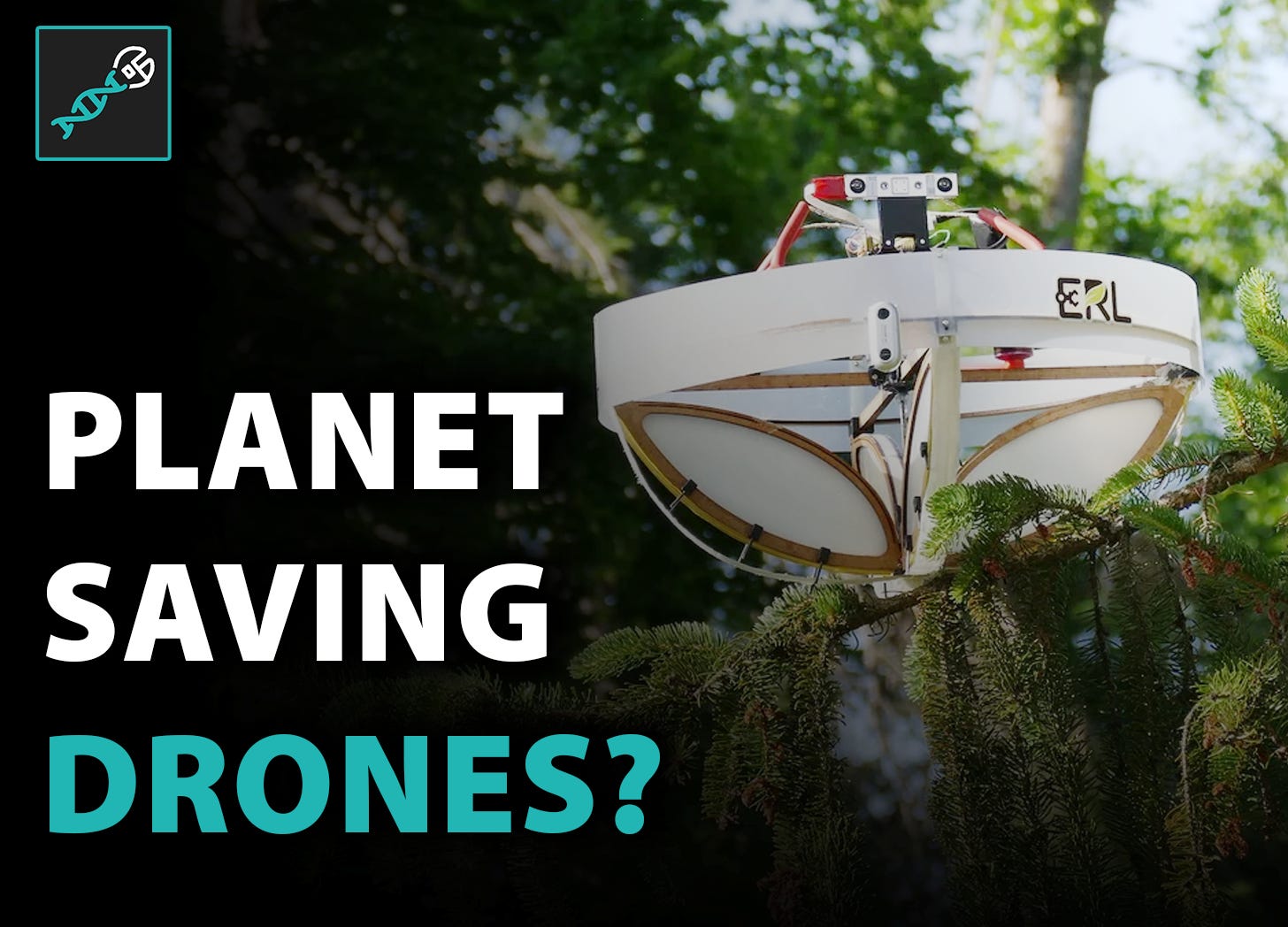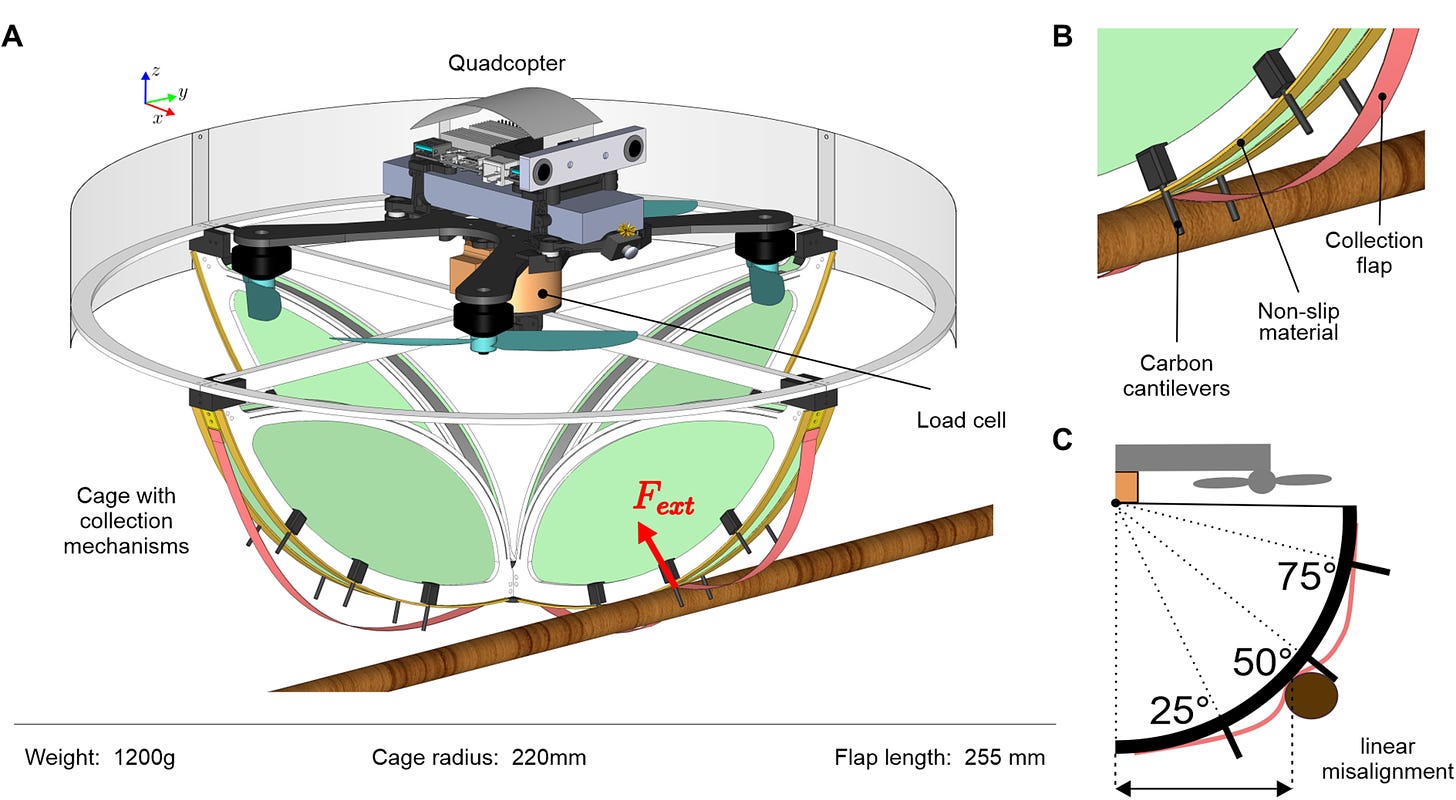Watch as Drones Take Flight to Save Our Planet
Can aerial robots be used to monitor biodiversity by collecting environmental DNA (eDNA) on the outer branches of tree canopies in a scalable manner?
A drone has been made to harvest DNA samples from the forest canopy. The drone may land on branches with adhesive strips to collect material for genetic matching. The data collected can then be used to monitor biodiversity changes in the environment. The drone is being prepared for a 24-hour Singaporean rainforest species detection competition. Due to rain and wind, rainforest sampling will be more difficult.
Welcome to the new Evolutionaries who have joined us since last month! If you haven’t subscribed, join 3,000+ smart, curious folks by subscribing here:
Sean’s Summary of:
Drone-assisted collection of environmental DNA from tree branches for biodiversity monitoring
Background
Environmental DNA (eDNA) is a type of genetic material left behind by living creatures in the environment that ecologists are increasingly employing to classify and monitor biodiversity. Researchers can use these DNA traces to determine which species are present in a given area. Water and soil samples are easy to collect, but other ecosystems, such as the forest canopy, are more challenging for researchers to reach. As a result, many species remain undiscovered in underexplored, biodiversity-rich locations. Researchers at ETH Zurich, the Swiss Federal Institute for Forest, Snow, and Landscape Research WSL, and the startup SPYGEN have collaborated to create a customized drone that can collect samples on tree branches independently.

Hypothesis
Can aerial robots be used to monitor biodiversity by collecting environmental DNA (eDNA) on the outer branches of tree canopies in a scalable manner?
The Results
Collecting environmental DNA (eDNA) in terrestrial environments is challenging due to the many potential surfaces and sources that need to be surveyed and their limited accessibility.
Researchers propose using an aerial robot to survey biodiversity by sampling eDNA on the outer branches of tree canopies.
The drone combines a force-sensing cage with a haptic-based control strategy to establish and maintain contact with the upper surface of the branches, while eDNA is collected using an adhesive surface integrated in the cage of the drone.
The drone can autonomously land on a variety of branches with stiffnesses between 1 and 103 newton/meter without prior knowledge of their structural stiffness and with robustness to linear and angular misalignments.
The device was tested on seven tree species. In the samples, they found DNA from 21 distinct groups of organisms, or taxa, including birds, mammals and insects.
Validation in the natural environment demonstrates that the method is successful in detecting animal species, including arthropods and vertebrates.
Combining robotics with eDNA sampling from a variety of unreachable aboveground substrates can offer a solution for broad-scale monitoring of biodiversity.
The researchers now want to improve their drone further to get it ready for a competition in which the aim is to detect as many different species as possible across 100 hectares of rainforest in Singapore in 24 hours.
<iframe width="560" height="315" src="title="YouTube video player" frameborder="0" allow="accelerometer; autoplay; clipboard-write; encrypted-media; gyroscope; picture-in-picture; web-share" allowfullscreen></iframe>Some Limitations
In tests in Switzerland, the drone collected material from seven trees in three days; in Singapore, it must be able to fly to and collect samples from ten times as many trees in just one day. Collecting samples in a natural rainforest, however, presents the researchers with even tougher challenges. Frequent rain washes eDNA off surfaces, while wind and clouds impede drone operation. It will be exciting to see how the drone handles the competition.






